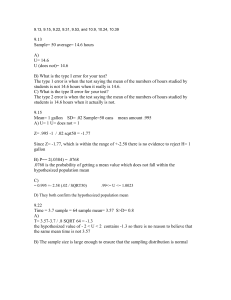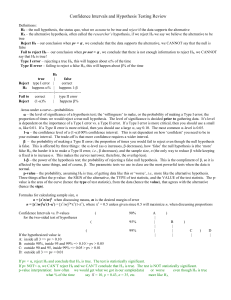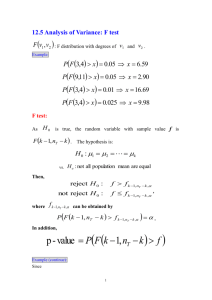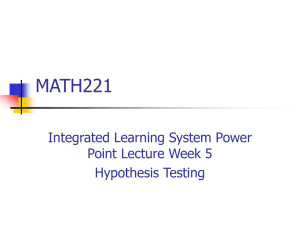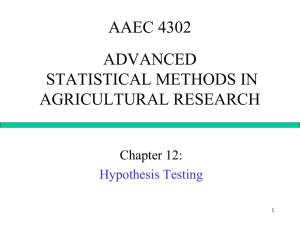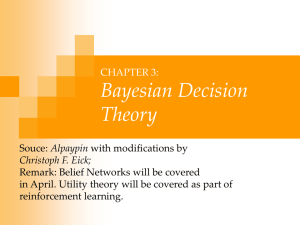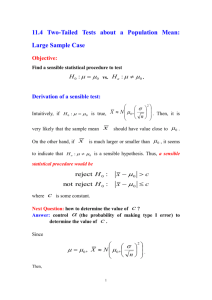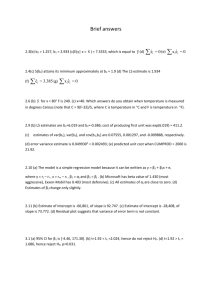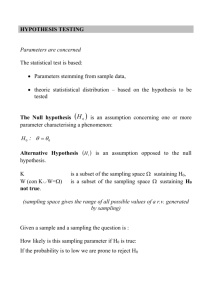11.1 Type I, II errors
advertisement
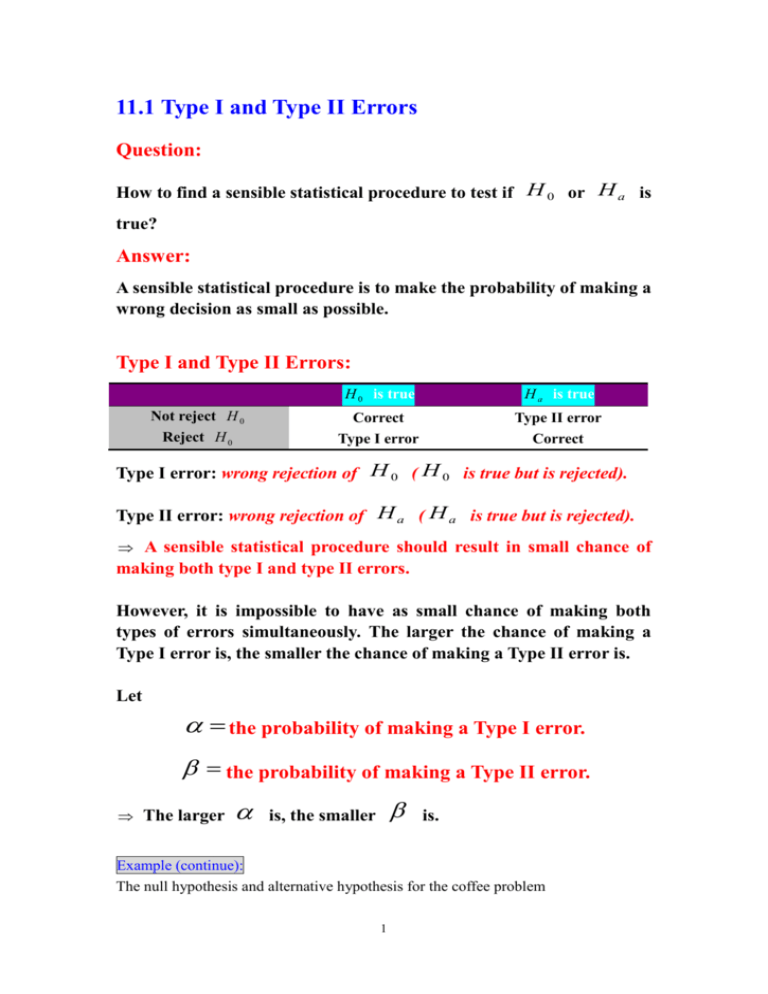
11.1 Type I and Type II Errors Question: How to find a sensible statistical procedure to test if H 0 or H a is true? Answer: A sensible statistical procedure is to make the probability of making a wrong decision as small as possible. Type I and Type II Errors: Not reject H 0 Reject H 0 H 0 is true H a is true Correct Type I error Type II error Correct Type I error: wrong rejection of H 0 ( H 0 is true but is rejected). Type II error: wrong rejection of H a ( H a is true but is rejected). A sensible statistical procedure should result in small chance of making both type I and type II errors. However, it is impossible to have as small chance of making both types of errors simultaneously. The larger the chance of making a Type I error is, the smaller the chance of making a Type II error is. Let the probability of making a Type I error. the probability of making a Type II error. The larger is, the smaller is. Example (continue): The null hypothesis and alternative hypothesis for the coffee problem 1 H0 : 3 vs. Ha : 3 . Statistical procedure 1: Throw a dice. Then, Reject H 0 : the point is smaller or equal to 3. Not reject H 0 : the point is larger than 3. Suppose the dice is fair and the random variable X represent the point of throwing a dice. As H 0 is true, PH 0 is true, but is rejected P 3, but the point is smaller or equal to 3 P X 3 3 1 6 2 As H a is true, PH a is true, but not rejected H 0 P 3, but the point is larger tha n 3 P X 3 3 1 6 2 Statistical procedure 2: Throw a dice. Then, Reject H 0 : the point is 1. Not reject H 0 : the point is larger than 1. As H 0 is true, PH 0 is true, but is rejected P 3, but the point is equal to 1 1 P X 1 6 As H a is true, PH a is true, but not rejected H 0 P 3, but the point is larger tha n 1 5 P X 1 6 Note (very important): Usually, we control to some predetermined numerical value, called the level of significance. Then, a sensible or good statistical procedure should result in as small value of as possible with controlled to the predetermined level of significance. 2 Note: Some commonly used level of significance include 0.1, 0.05, 0.01. Note: Since most applications of hypothesis testing control for the probability of making a Type I error, the probability of making a Type II error would not be controlled. Since the probability of making a Type II error can not be controlled, “not reject H 0 ” can still have high probability of making a Type II error. Therefore, we do not “accept H 0 ” since the probability of making an error is still high. We do “not reject H 0 ” so far because we can not find enough evidence to “reject H 0 ”. Example 1: Let X be normal random variable with mean and variance 4. For the following hypothesis test H 0 : 1 vs. H a : 2 , we reject H0 as X 3 . Please calculate the probabilit y of making a type I error . the probabilit y of making a type II error . [solutions:] PH 0 is true, but is rejected P X 3, 1 X 1 3 1 P PZ 1 X ~ N 1,4 2 2 1 0.8413 0.1587 3 PH a is true, but not reject H 0 P X 3, 2 X 2 32 P PZ 0.5 X ~ N 2,4 2 2 0.6915 Exercise: Let X be binomial random variable with 3 i 3 i n 3 (i.e., f (i ) p 1 p , i 0, 1, 2, 3.) . i For the following hypothesis test H0 : p we reject H0 as 1 2 vs H a : p , 2 3 X 0 or 3 . Please calculate the probabilit y of making a type I error the probabilit y of making a type II error . Online Exercise: Exercise 11.1.1 4



